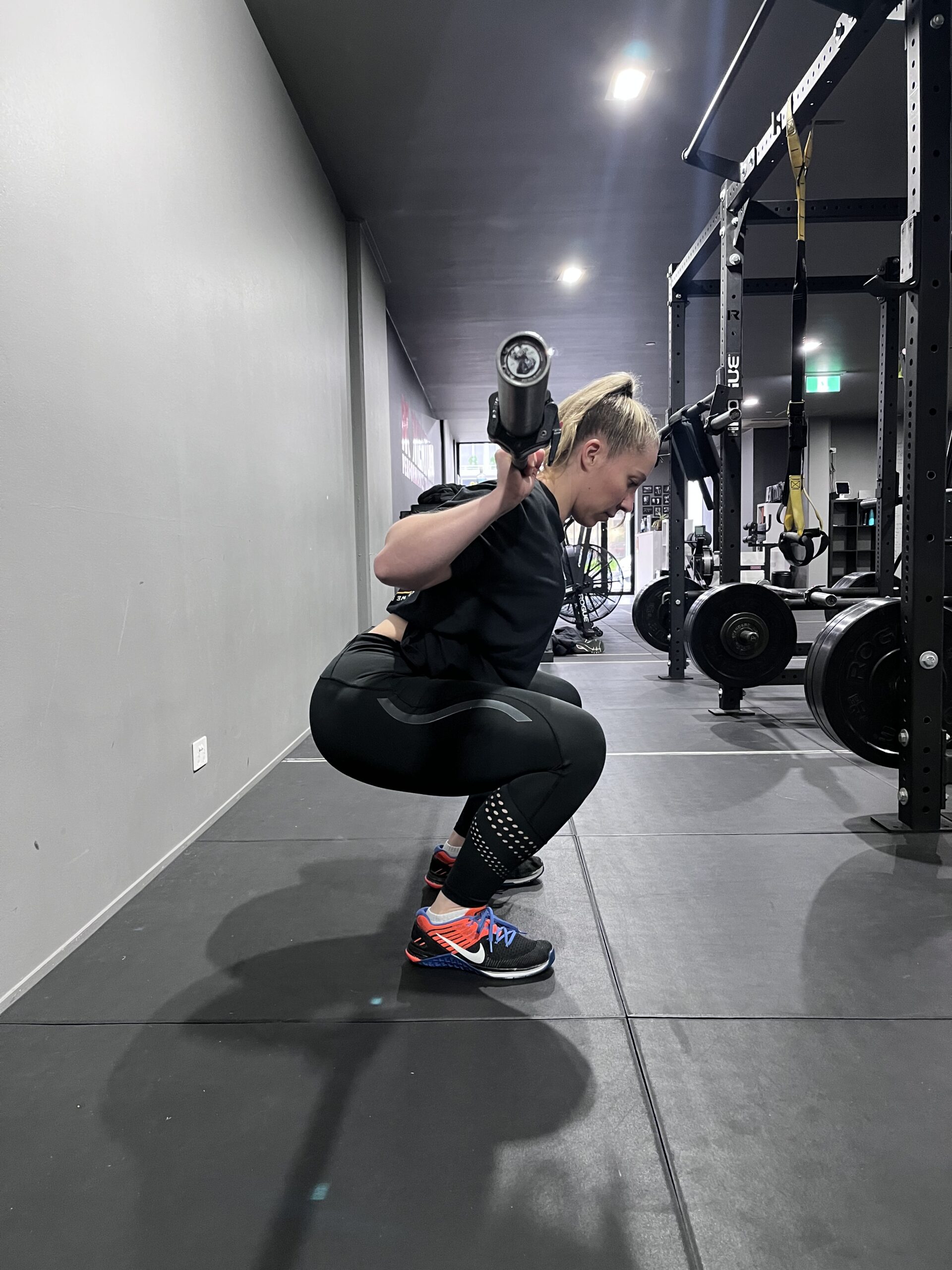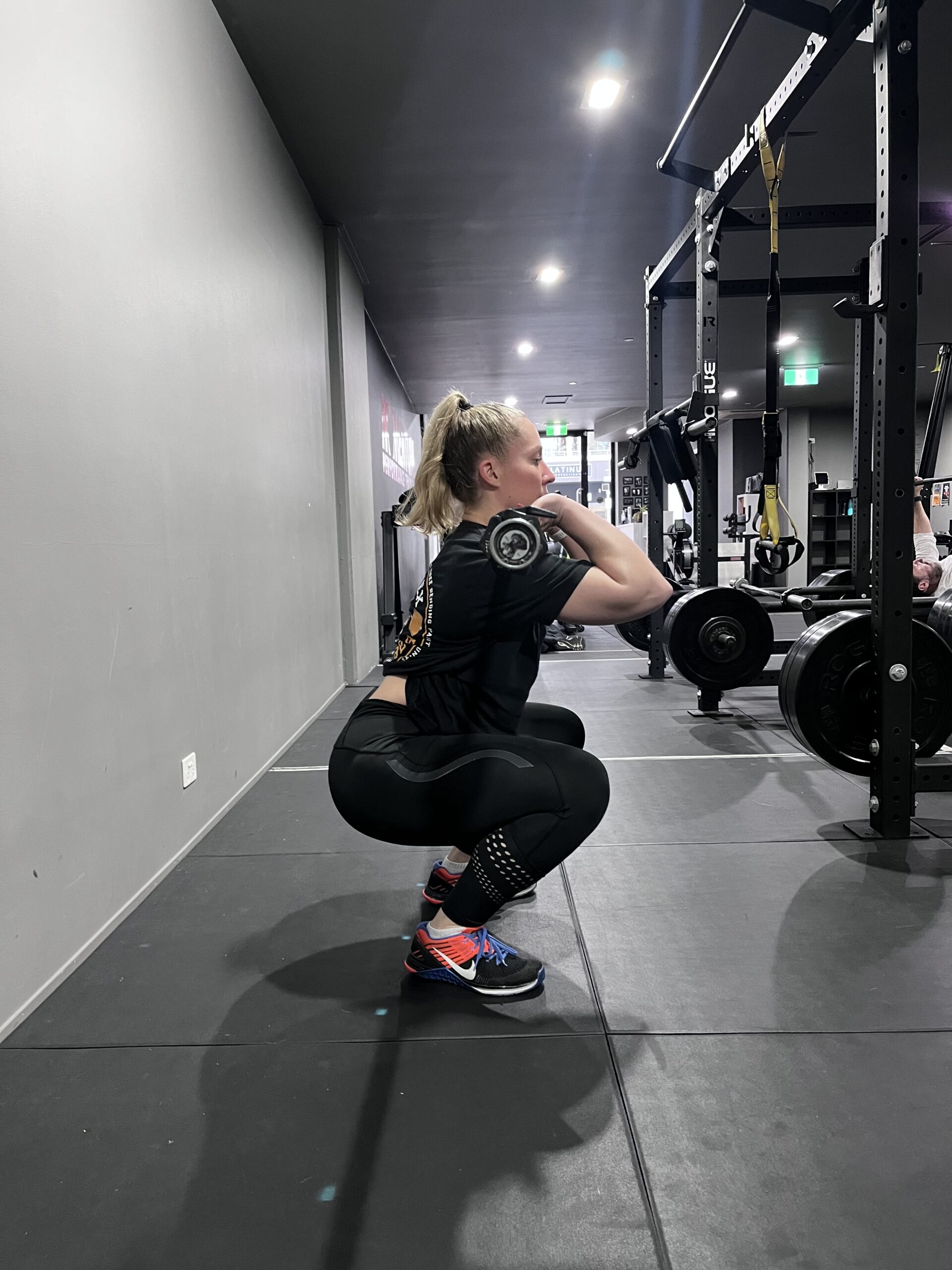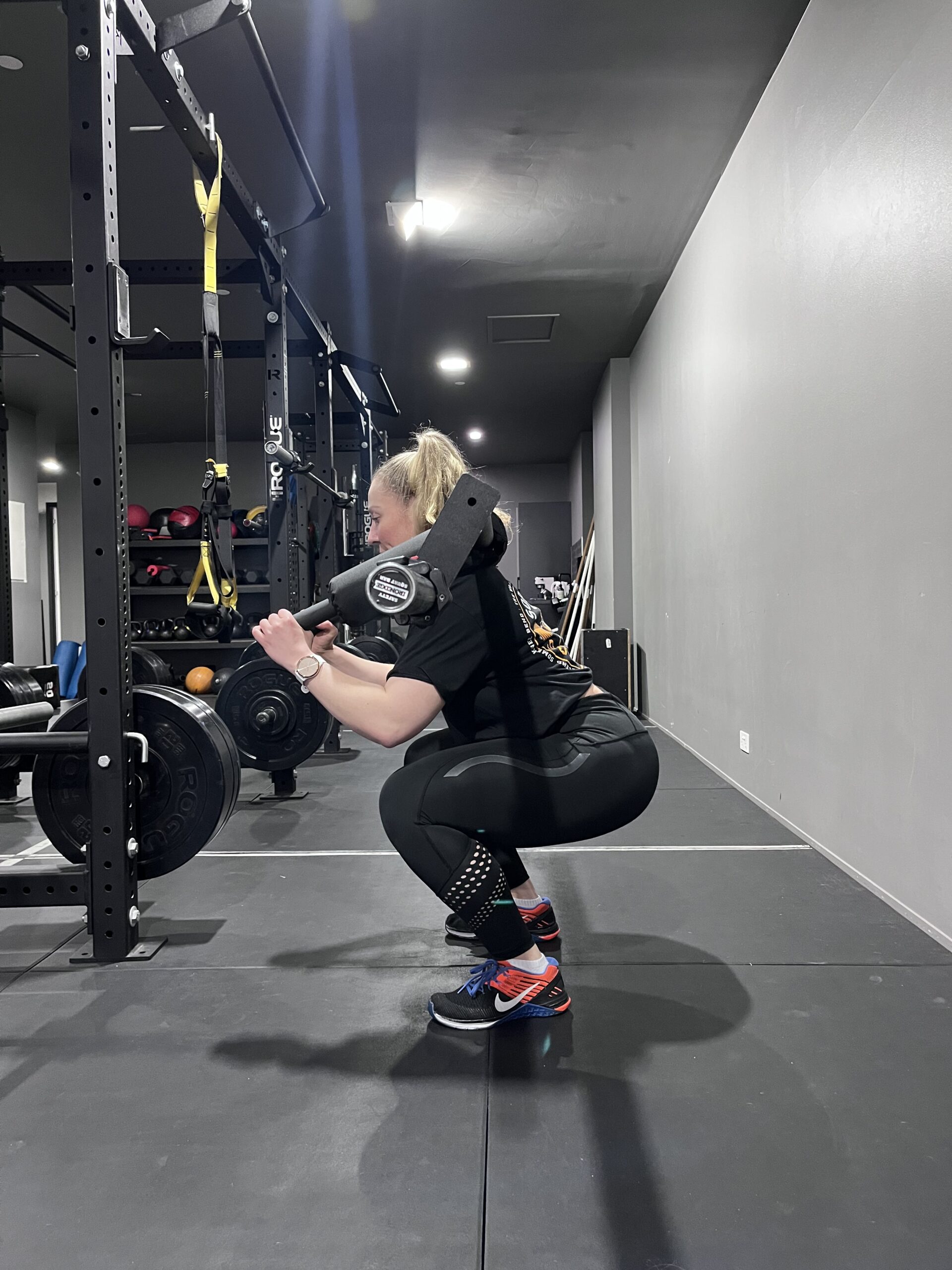Squats! Chances are you have some variation of a squat in your programming. They are an awesome exercise to develop strength and muscle mass, and once you progress to barbell variations; they can be a fun and relatively technical skill to develop. Below we are going to discuss three variations of barbell squats; back squats, front squats, and safety bar squats, and the why and how of using them in your training.
Squats are a technical exercise, with many variations. Once technically proficient in the lift, we can load them relatively heavy, and program with high intensities and volume safely – and derive some pretty hefty performance improvements, in strength, hypertrophy, power output, motor unit recruitment (skill, and recruitment patterning), and improved joint health.
Back squats are probably the most common variation used in the gym. In terms of body positioning, the barbell will be placed on your upper back, with your shoulders retracted, full grip with hands as close to the shoulders as possible, and elbows pulling towards the ground. This position is going to create tension and ‘compression’ in the thoracic (upper back) region throughout the lift.
Because of the bar placement, the torso will need to incline forward slightly, and the hip will need to move through a larger range of motion, when compared to the knee (see image below, we will compare this to the front squat). This means that the Glutes, and Quads will do a lot of work to move the barbell throughout the lift.

When looking at Front squats there are some obvious differences in body positioning in the front squat when compared to the back squat. Firstly, the bar will be positioned on the front of the shoulders, this will require protraction or spreading of the shoulder blades, and elbows to be positioned high and in front of the body. Sometimes this can be an uncomfortable position to achieve, but there are benefits to practising and utilising this movement.
During the front squat the torso will need to stay more upright, so the bar doesn’t move or fall forward. Due to the upright torso position, the hips won’t be loaded as much, and there will be a greater range of motion required through the knee, resulting in more work being done by the quads. And in general, your trunk or abs will be doing more work in this variation as well.
Interestingly, a lot of people find they can sit deeper in the front squat when compared to the back squat, and this mostly has to do with weight distribution of the barbell over the middle of the foot. In order to stay balanced (in all squat variations), we want to aim to keep the bar over the middle of the foot (as seen from side on). And to do this the hips will need to move backwards, and the knees forward – and this will have a resultant torso angle. With the front squat, as mentioned the hips will not need to move as far back to maintain balance, and keeping the torso upright, will mean the hips can sit down deeper in this variation.

Safety bar squats are a great variation to use in your programming. Whether it is your first time barbell squatting, or you are an experienced lifter, utilising the safety bar can have awesome benefits. It is a kind of hybrid squat between back and front squats, for reasons we will discuss below.
In terms of shoulder and thoracic positioning; the safety bar is most like a front squat, with a more flexed upper back and protracted shoulder position, and elbows in front of the body. While torso, knee and hip angles are more like the back squat. This has the benefit of allowing you to lift heavier loads (like your back squat), without the shoulders being in a potentially uncomfortable position (as in the front squat).

With each barbell squat having their own benefits, exploring the variety of barbell squat variations can keep your training more interesting, as well as target different musculature, and joint positions. In general, when programming these lifts, focus on executing with good technique, and to your comfortable full range of motion.
